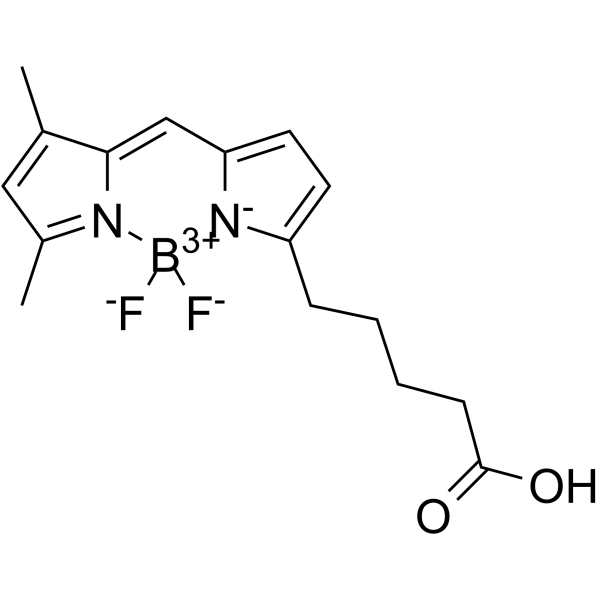| In Vitro |
Guidelines (Following is our recommended protocol. This protocol only provides a guideline, and should be modified according to your specific needs). A. Enzyme assays[1]: 1. An aliquot of phospholipid was placed in a 1×1-cm fluorescence cuvette and buffer (50 mM Tris, pH 8, 100 mM NaCl, 1 mM CaCl2) was added to a total volume of 1.3 mL. The temperature was allowed to equilibrate at 35°C with stirring for several minutes and the background emission was recorded (the background rate was undetectable). Enzyme (1-10 μL) was added and the emission was recorded. 2. An aliquot of phospholipid (78 μL of 0.05 mM substrate/0.5 mM DTPM) was placed in a 1×1-cm fluorescence cuvette and buffer (50 mM Tris, pH 8, 100 mM NaCl, 1 mM CaCl2, 30% glycerol) was added to a total volume of 1.3 mL. The temperature was allowed to equilibrate at 35°C with stirring for several minutes and the background emission was recorded (the background rate was undetectable). Enzyme (1-10 μL) was added with extra mixing of the viscous solution, and the emission was recorded. 3. A measured amount of BODIPYFL-C5 (in the case of PBPEC6DNP and MBPEDNP) or BODIPY-FL-C5-lyso-PAF (in the case of BC11-DNPC8-PC) was added to the phospholipid substrate solutions and the increase in emission was recorded. The factor, picomoles of BODIPY product/intensity unit increase, was then used to convert emission increase/sec to picomoles of product/second in the assays. B. Zebrafish in vitro assay[1]: 1. Embryos were placed in 0.15 mL of embryo medium (EM: 13.7 mM NaCl, 0.537 mM KCl, 0.025 mM Na2HPO4, 0.044 mM KH2PO4, 1.30 mM CaCl2, 1 mM MgSO4, 4.2 mM NaHCO3, pH 7.2) . 2. Containing 150-200 ng of a fluorescent phospholipid substrate, and sonicated for 2-5 s. 3. After 1 h at 37℃, reactions were stopped by the addition of 0.45 mL of chloroform: methanol (2:1), mixed, and centrifuged (30 s, 16,000g) . 4. The aqueous fraction was discarded and an aliquot of organic fraction was loaded on thin-layer chromatography plates. 5. Plates were developed in toluene: diethyl ether: ethanol: acetic acid (50:40:2:0.2) and quantified using a laser scanner.
|
